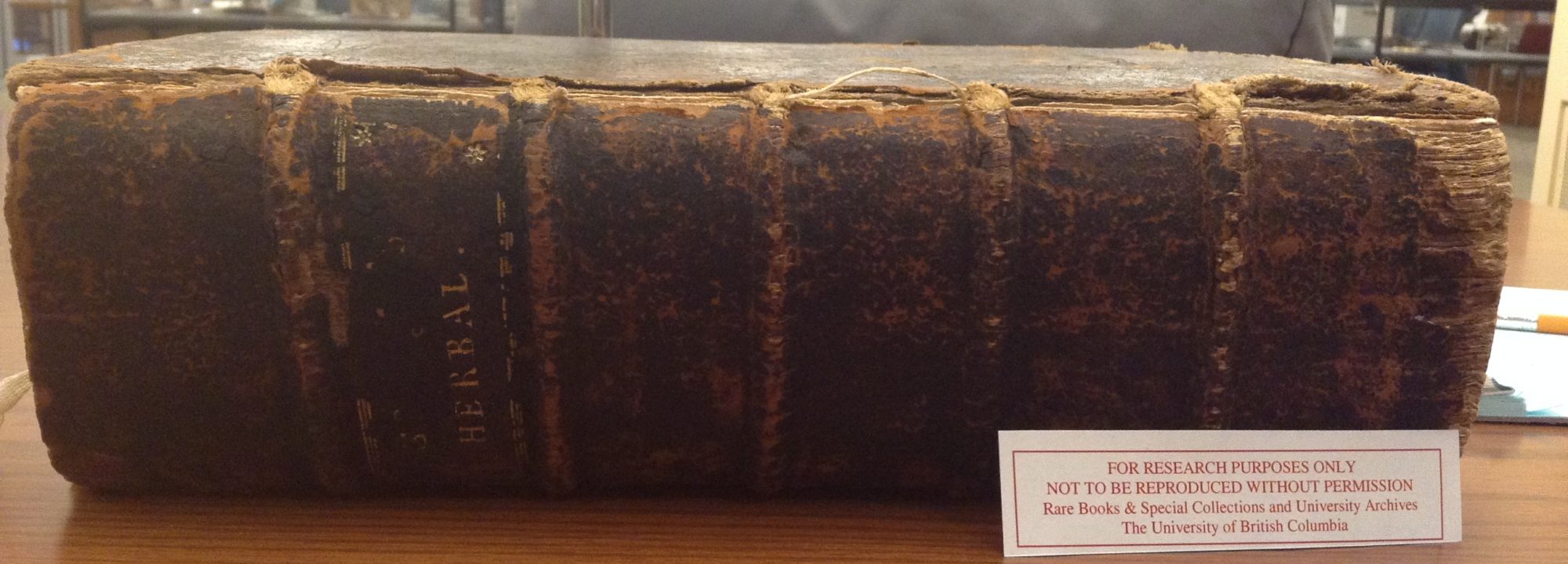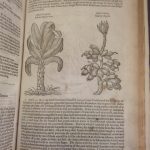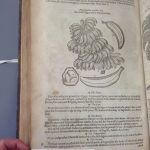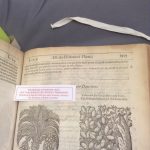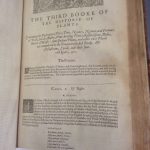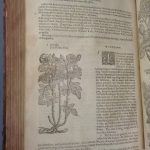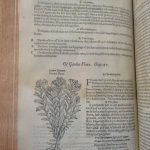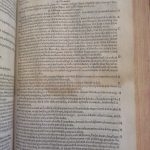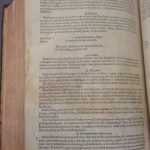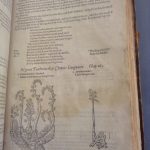A printed herbal of the 16th century is an encyclopedia, which includes illustration, descriptions of plants’ habitat, known names, appearance, and virtues or medicinal properties (Leah Knight, “Of Books and Botany” 22). In addition to these characteristics, herbals in the 16th century also showed a kind of fusion between the literary and the scientific (Knight 25). This was demonstrated in Gerard’s Herball with his reference to “Adam’s Apple Tree,” a name which Paul Cox links to Milton and Paradise Lost (“The Promise of Gerard’s Herball” 51). Gerard often makes references to literary figures, such as Virgil and others, as well as including folklore about the plants.
- Adam’s Apple tree is really a plantain tree. From 1636 edition.
- Nightshade and the story of the Nightshade fruit. From 1633 edition.
- Nightshade and the story of the Nightshade fruit. From 1633 edition.
- In the beginning of Book 3, Gerard opens with with a section on roses.
- “Of Garden Flax” from 1633 edition.
- Just the description of flax to go with the previous photo.
- Fluffeball mushrooms. From 1597 edition.
- Fluffeball mushrooms. From 1597 edition.
Works Cited
Cox, Paul. “The Promise of Gerard’s Herball: New Drugs from Old Books.” Endeavour, vol. 22, no. 2, 1998, pp. 51-53, doi: https://doi.org/10.1016/S0160-9327(98)01111-9. Accessed 20 March 2018.
Knight, Leah. Of Books and Botany in Early Modern England: Sixteenth-Century Plants and Print Culture. Surrey, Ashgate Publishing Limited, 2009.
